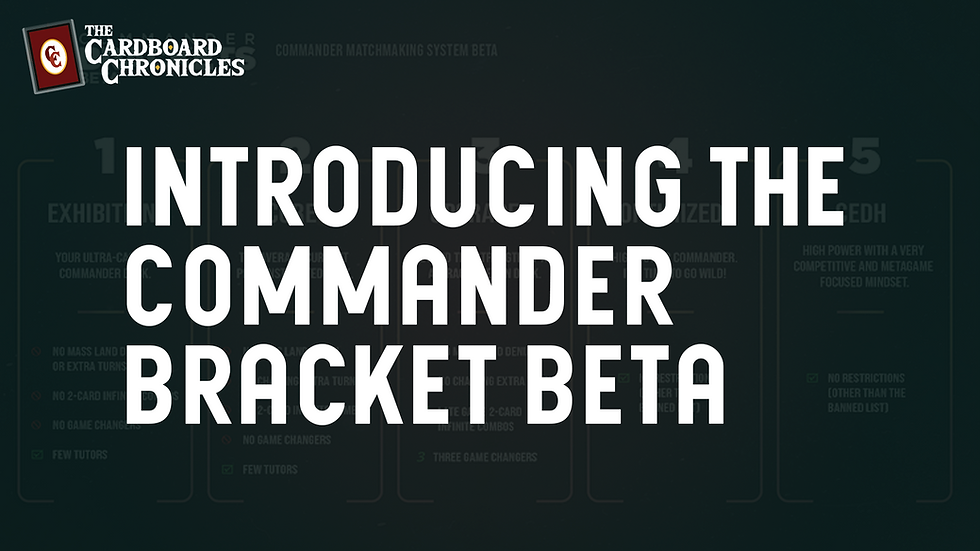Let's Talk Pauper – MTG's Budget Format
- Greg Montique

- Apr 30
- 4 min read
Ah, MTG's Pauper. The format that proves you don’t need a yacht to enjoy the ocean. I’ve been slinging spells since the days when you could buy a Black Lotus with a paper route and still have change for a hot dog. I've played through Urza’s broken dreams, Mirrodin’s artifact nightmare, and that time we all pretended Homelands wasn’t that bad (spoiler: it was). But now, I want to talk about a format that brings joy, nostalgia, and financial stability all in one humble package.
Welcome to Pauper – the format where commons reign supreme, and your wallet doesn’t beg for mercy.
What is MTG's Pauper?
Pauper is a Magic: The Gathering format where you can only play cards that were printed at common rarity in a Magic set or product that has appeared on Magic Online or in a paper release. That’s right – no mythics, no rares, not even an overachieving uncommon sneaking in like it owns the place.
You still build a 60-card deck (or more if you're feeling chaotic), and you still get a 15-card sideboard. The card pool spans all of Magic’s history, as long as the card has been printed at common at least once. You want Lightning Bolt? You got it. Counterspell? In there. Gray Merchant of Asphodel? Heck yes, and good luck getting that goofy zombie grin out of your nightmares.
Why Pauper is Appealing
1. It’s Budget-Friendly Without Being Boring
Let’s face it. Magic can be stupid expensive. Pauper gives you access to powerful, synergistic decks for the cost of a night out – assuming your night out doesn’t involve sushi and a concert. Some of the top-tier Pauper decks cost less than the sleeves you’d need to double-protect your $5,000 Legacy deck. You can own multiple decks and not feel like you’ve sold your soul or your dual lands.
2. It’s Competitive but Fair
Pauper isn’t just “kitchen table Magic with bad cards.” Some of these decks are tuned machines. You’ll see deep decision trees, stack battles, and the occasional moment where someone’s whole strategy revolves around casting a 1-mana 1/1 goblin and daring you to care. There’s no fast combo nonsense like “Oops All Spells” or “Turn One Griselbrand, LOL.” Instead, it's interactive Magic with good old-fashioned creature combat, control elements, and the occasional lava to the face.
3. It’s a Format for the Nostalgic
Remember Mulldrifter? It’s a Pauper all-star. Ever cast Ponder and felt like a brain wizard? Still legal. Pauper lets you relive the glory days of Magic without having to mortgage your house to afford a Tarmogoyf. For players who’ve been around the block a few hundred times, it’s like a greatest hits album with fewer bad remixes.
4. The Meta is Wide and (Mostly) Healthy
You’ve got aggressive decks like Burn and Affinity, control decks with blue cards doing blue things, midrange brews full of elves or zombies, and a bunch of weird combo decks that involve cards you forgot even existed. There’s something for everyone, and every few months the meta shifts just enough to keep things spicy.
How to Get Started
Step 1: Pick a Deck Archetype You Like
Love smashing face? Go for Mono-Red Burn or Stompy Green. Want to drown your opponent in card advantage? Try Dimir Control. Like turning sideways but with flair? Boros Synthesizer or Affinity might be your jam.
If you’re not sure, just Google “Pauper tier list” and see what’s topping the charts. Or go rogue and build around that one janky combo you loved in high school. Nobody’s judging – except the guy playing Tron, but he judges everyone.
Step 2: Build Your Deck (and Maintain Your Credit Score)
Sites like MTGGoldfish and Moxfield have budget filters and Pauper decklists galore. You can grab a competitive deck for $20–$40. Honestly, it costs more to buy sleeves and snacks for FNM.
Step 3: Find a Place to Play
Pauper’s got a solid online presence, especially on Magic Online (MTGO), where the format is well-supported. In paper, many local game stores run casual Pauper nights or even small tournaments. Worst case? Call up your old Magic crew, give everyone a $30 budget, and let the cardboard carnage commence.
Step 4: Enjoy the Sweet, Sweet Value
The best thing about Pauper? It’s just fun. There’s something inherently satisfying about doing cool things with cards people usually throw in the bulk bin. When you win a game by casting a common from 1996, it feels like high-fiving your past self.
Final Thoughts
Pauper might not have the glitz and glam of Modern or the ancient tomes of Legacy, but it has heart. It’s Magic boiled down to its essence – tight gameplay, clever interactions, and a complete disregard for your opponent’s feelings when you flicker a Mnemonic Wall for the fourth time in a turn.
So if you’re looking for a way to enjoy Magic without financially reenacting Titanic, give Pauper a try. Your wallet and your inner 12-year-old who once opened a Lightning Bolt and thought it was the coolest thing ever will thank you.










Comments